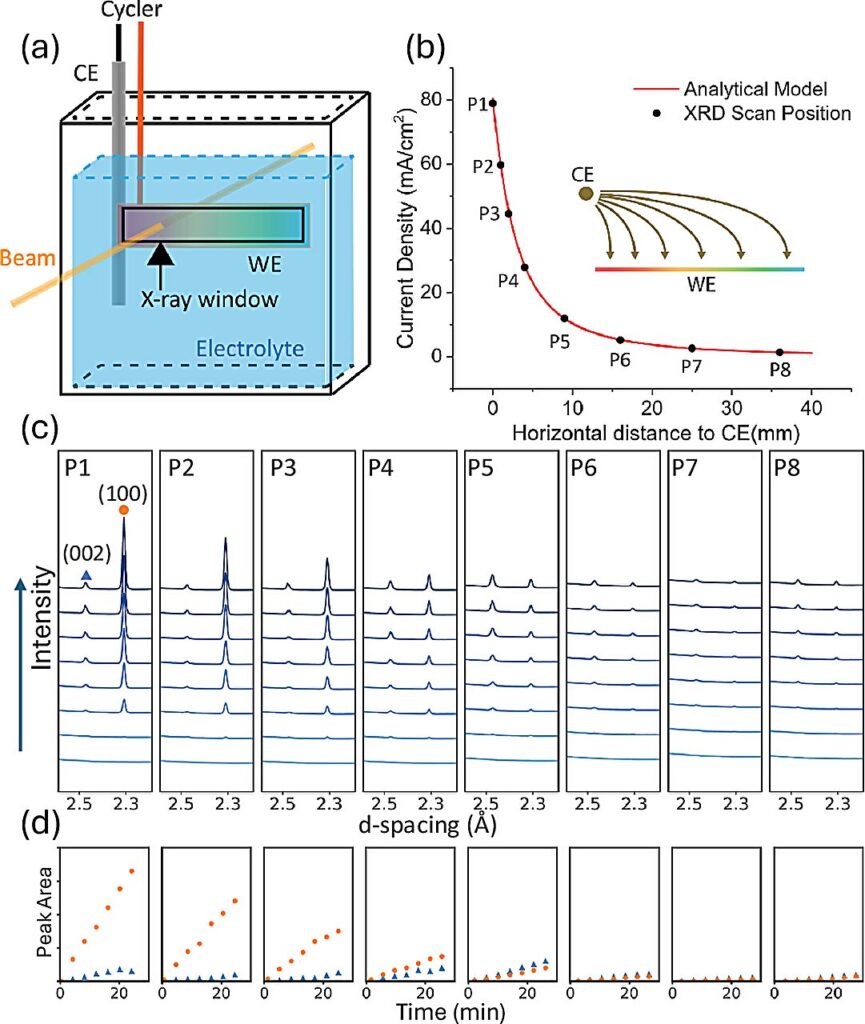Fast charging a battery is supposed to be risky—a shortcut that leads to battery breakdown. But for a Georgia Tech team studying zinc-ion batteries, fast charging led to a breakthrough: It made the battery stronger. This result could revolutionize how we power homes, hospitals, and the grid.
By flipping a foundational belief in battery design, Hailong Chen, an associate professor in the George W. Woodruff School of Mechanical Engineering, and his team found that charging zinc-ion batteries at higher currents can make them last longer. The surprising result, recently published in Nature Communications, challenges core assumptions and offers a path toward safer, more affordable alternatives to lithium-ion technology.
Why zinc-ion batteries?
Zinc-ion batteries have several key advantages over lithium-ion batteries, the most commonly used rechargeable battery technology:
- Abundant: Zinc is one of the most abundant metals on Earth, and it’s mined in many countries.
- Low cost: Zinc is significantly cheaper than lithium and doesn’t rely on scarce materials.
- Nonflammable: Unlike lithium, zinc batteries won’t catch fire—a critical safety benefit.
- Environmentally safer: Zinc is less toxic and easier to recycle than lithium-based materials.
However, until Chen’s discovery, zinc-ion batteries had one major drawback. The growth of dendrites, the sharp metal deposits that form during charging, can eventually short-circuit the battery.
“We found that using faster charging actually suppressed dendrite formation instead of accelerating it,” Chen said. “It’s a very different behavior than what we see in lithium-ion batteries.”
With this approach, the zinc doesn’t build up into dendrites. Instead, it settles into smooth, compact layers—more like neatly stacked books than splintered shards—a structure that not only avoids short circuits but also helps the battery last longer.
“It goes against the conventional thinking that fast charging shortens battery life,” Chen said. “What we found expands people’s understanding of fast charging that could rewrite how we think about battery design and where they can be used.
Solving half of the problem
Even breakthroughs have limits. Chen was quick to point out that while his discovery solves a major issue, it only fixes one half of the battery.
A battery has two main ends, the anode and the cathode. Chen’s team made the anode last much longer. Now, the cathode must catch up. He is working to improve the cathode so the whole battery performs reliably over time. His team is also experimenting with mixing zinc with other materials to make zinc-ion batteries even more durable.
Testing everything at once
Chen’s team didn’t just stumble on these results. They built a novel tool that allowed them to watch how zinc behaved under different charging rates in real time, studying many samples simultaneously.
That real-time, side-by-side view was important. Traditional battery experiments usually test one variable at a time. But this novel approach allowed researchers to test hundreds of conditions at the same time, speeding up discovery and revealing patterns that would have been easy to miss.
“We weren’t just seeing whether the battery worked or not; we were watching the structure of the material evolve as it charged,” Chen noted. Using their new tool, he and his team uncovered for the first time why fast charging makes zinc settle into smooth, tightly packed layers instead of dangerous, needle-like spikes. No one had ever experimentally mapped out this process before.
It’s an approach that combines efficiency with insight.
Charging into the future
Chen’s team didn’t reinvent the battery. They challenged the status quo—and the data took them somewhere no one imagined. That unexpected result could redefine battery science.
“You can imagine these zinc-ion batteries being used to store solar energy in homes, or for grid stabilization,” Chen said. “Anywhere you need reliable, affordable backup power.”
With growing demand for clean energy, unstable lithium supply chains, and safety concerns over flammable batteries, the need for alternatives has never been more urgent.
If all goes well, Chen hopes zinc-ion batteries could be ready for everyday use in about five years.
More information:
Yifan Ma et al, Understanding rate-dependent textured growth in zinc electrodeposition via high-throughput in situ x-ray diffraction, Nature Communications (2025). DOI: 10.1038/s41467-025-61813-y
Citation:
Fast charging zinc-ion batteries to flip a foundational belief in battery design (2025, August 21)
retrieved 22 August 2025
from https://techxplore.com/news/2025-08-fast-zinc-ion-batteries-flip.html
This document is subject to copyright. Apart from any fair dealing for the purpose of private study or research, no
part may be reproduced without the written permission. The content is provided for information purposes only.

